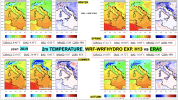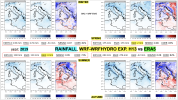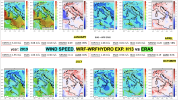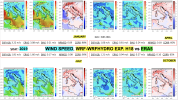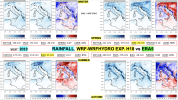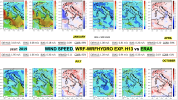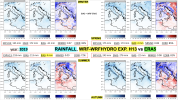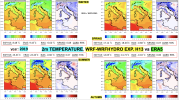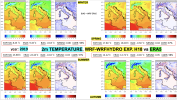Alessandro Delo
New member
Dear all,
I'm running several exps with WRF (v. 4.4.1) + WRF-HYDRO (v. 5.2) and I'm facing some issues related to the evaluation of the 2 meter temperature in a specific region of Europe (Balkan area in details). My simulations show a difference of more than 10˚ over this region with respect ERA5 dataset. I suspect it is something related to the LAI (Leaf area index) parameter. I'm trying to do a bit of sensitivity about the dveg option that can be used within NOAHMP LSM. Reading the WRF userguide, there are several choices that one can do related on how to set the dveg option in the WRF namelist:
- "lai predicted" (options 2 e 5): we are activating a model, within NOAMP, related to the vegetation;
- "lai from table" (options 1 and 3, maybe 7, 8 and 9), reads this variable from Table.
- "lai from input" (options 7, 8 e 9): takes monthly LAI from geo_em (I/m actually using MODIS dataset, 30arcsec resolution).
To me, it is not clear enough the difference between the options "Lai from table" and "Lai from input". Can someone help me to fully get this point? Which is the difference between them?
Many many thanks in advance!
Alessandro
I'm running several exps with WRF (v. 4.4.1) + WRF-HYDRO (v. 5.2) and I'm facing some issues related to the evaluation of the 2 meter temperature in a specific region of Europe (Balkan area in details). My simulations show a difference of more than 10˚ over this region with respect ERA5 dataset. I suspect it is something related to the LAI (Leaf area index) parameter. I'm trying to do a bit of sensitivity about the dveg option that can be used within NOAHMP LSM. Reading the WRF userguide, there are several choices that one can do related on how to set the dveg option in the WRF namelist:
- "lai predicted" (options 2 e 5): we are activating a model, within NOAMP, related to the vegetation;
- "lai from table" (options 1 and 3, maybe 7, 8 and 9), reads this variable from Table.
- "lai from input" (options 7, 8 e 9): takes monthly LAI from geo_em (I/m actually using MODIS dataset, 30arcsec resolution).
To me, it is not clear enough the difference between the options "Lai from table" and "Lai from input". Can someone help me to fully get this point? Which is the difference between them?
Many many thanks in advance!
Alessandro

